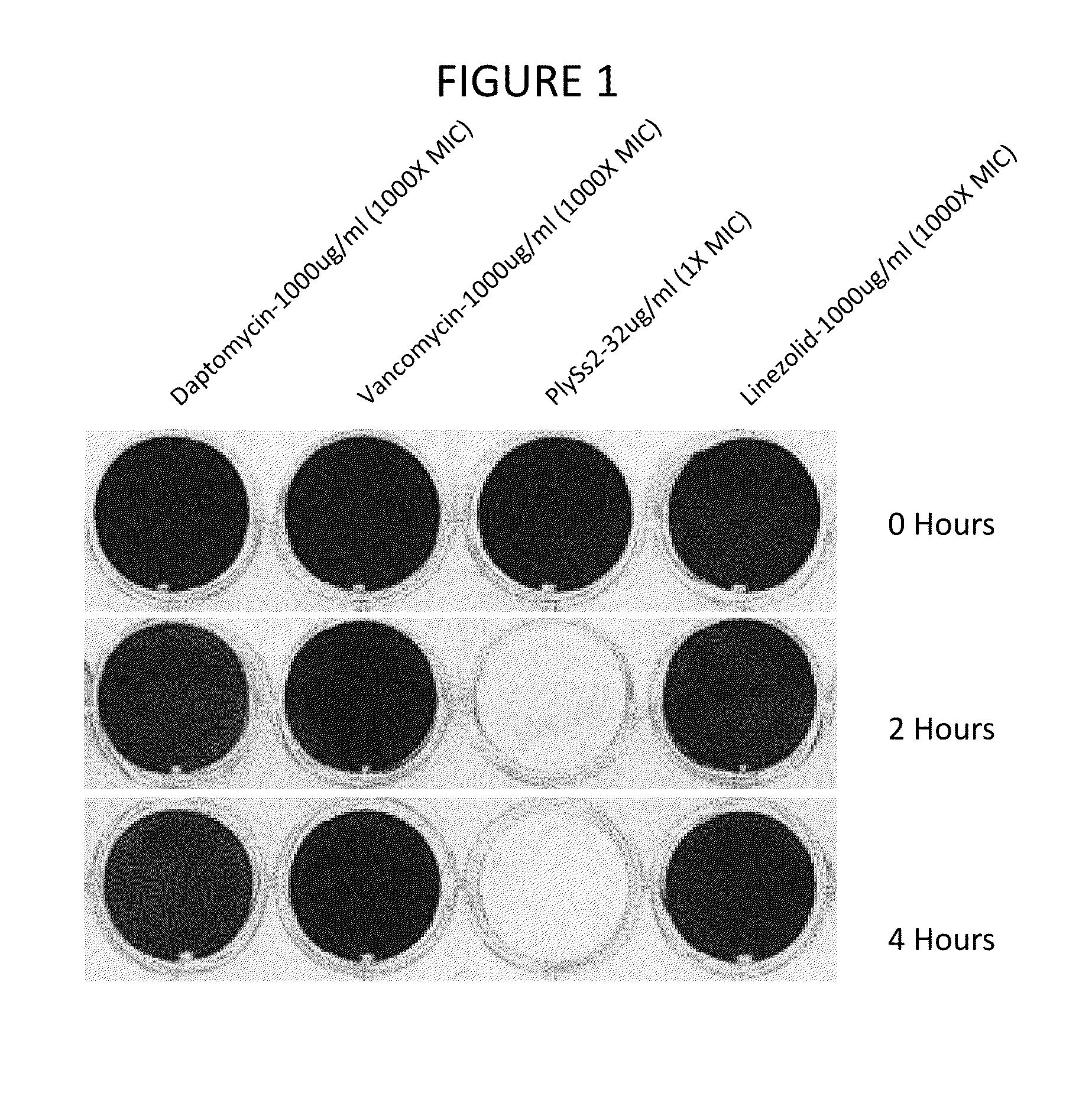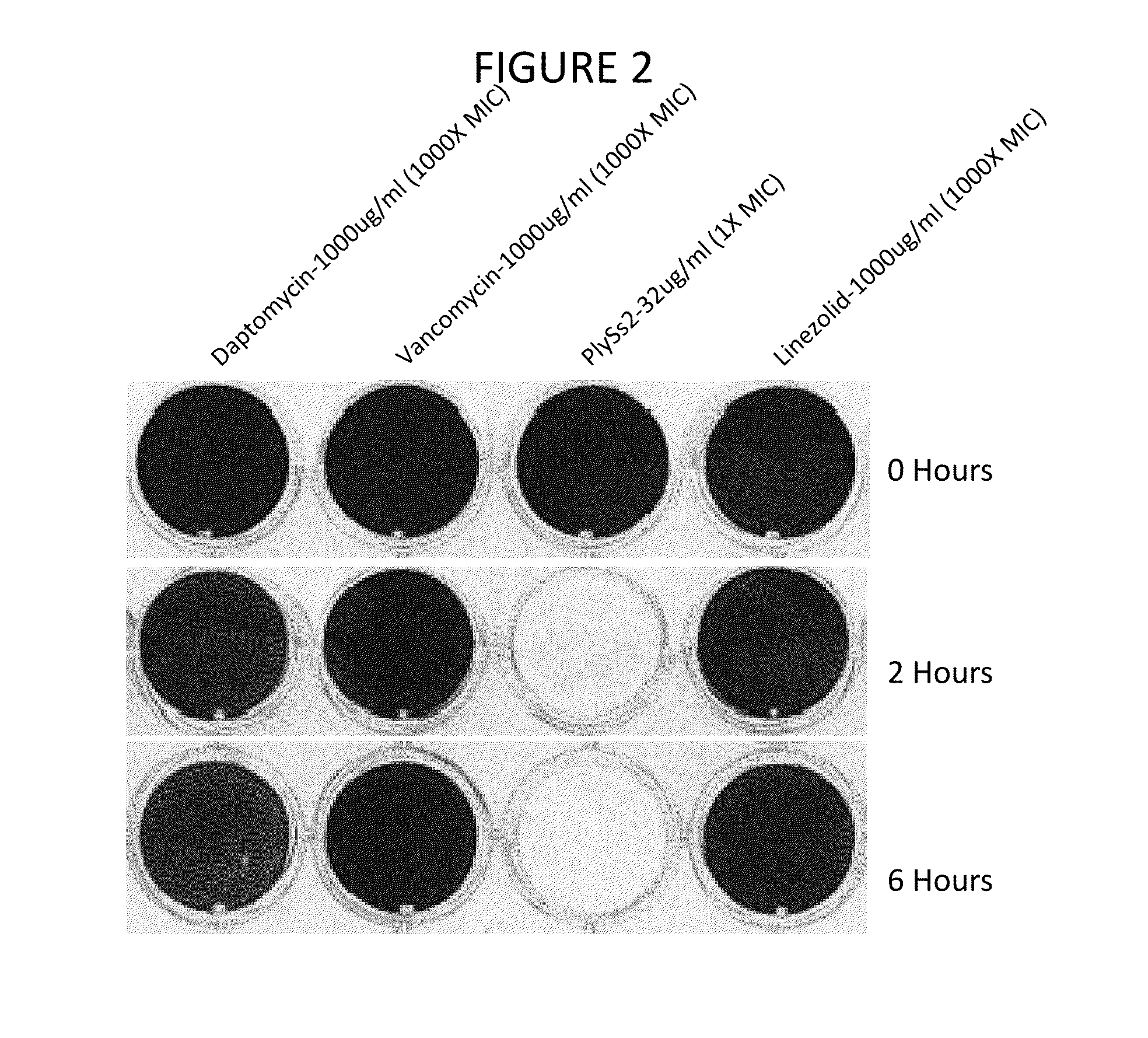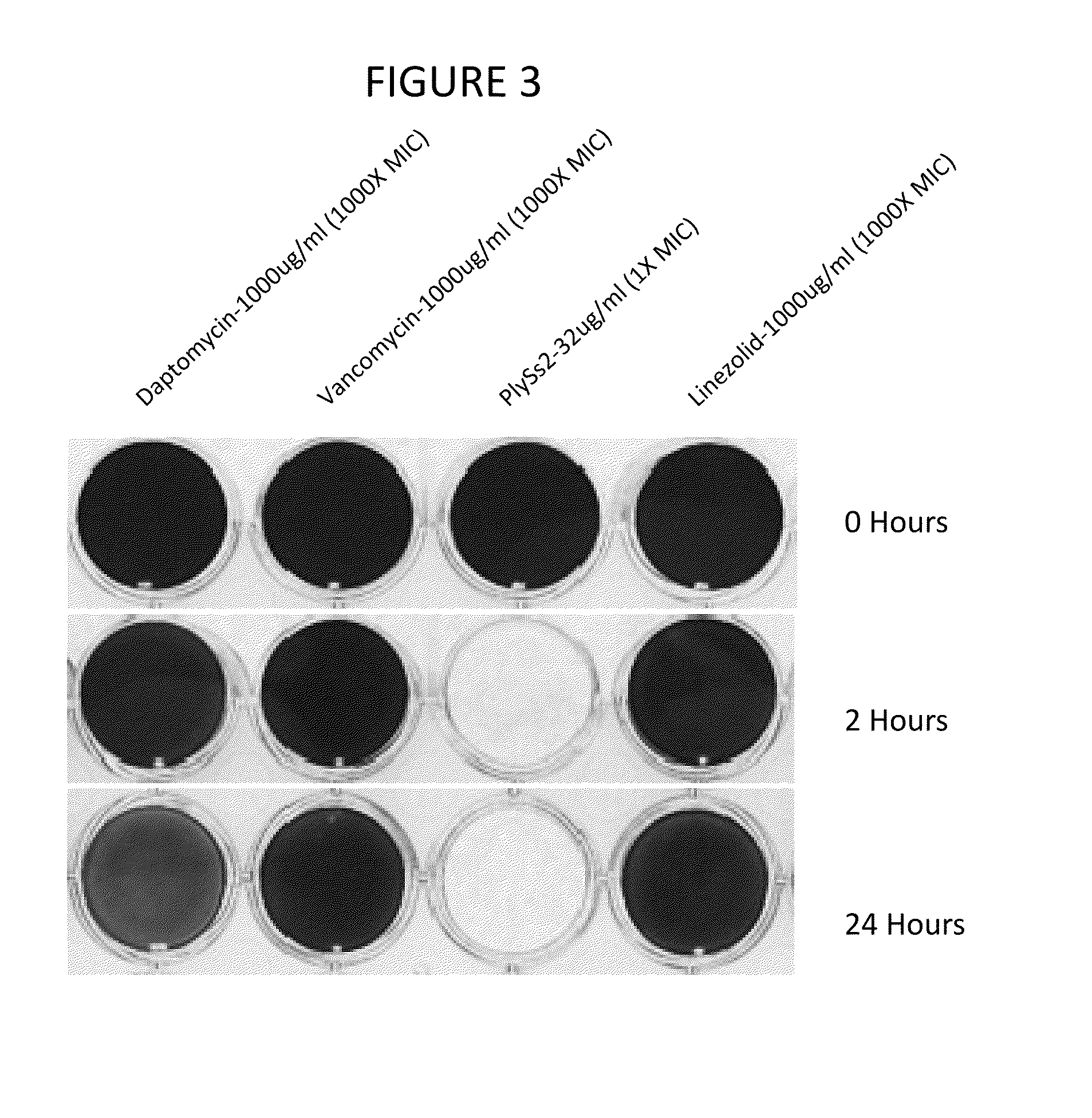Biofilm prevention, disruption and treatment with bacteriophage lysin
a technology of lysin and lysine, which is applied in the direction of antibody medical ingredients, catheters, peptides/protein ingredients, etc., can solve the problems of drug resistant bacteria development, ineffective application of antibiotics, and inability to penetrate mucus linings easily, so as to reduce the population of gram-positive bacteria
- Summary
- Abstract
- Description
- Claims
- Application Information
AI Technical Summary
Benefits of technology
Problems solved by technology
Method used
Image
Examples
example 1
[0165]PlySs2 lysin demonstrates the ability to kill various strains of clinically significant gram positive bacteria, including methicillin and vancomycin resistant and sensitive strains of Staphylococcus aureus (MRSA, MSSA, VRSA and VISA). PlySs2 is a unique lysin in having broad species killing activity and can kill multiple species of bacteria, particularly gram-positive bacteria, significantly various antibiotic-sensitive and antibiotic-resistant Staphylococcus, and also Streptococcus, including Group A and Group B streptococcus. Other PlySs2 sensitive bacteria include Enterococcus and Listeria bacterial strains. A tabulation of sensitivity of various bacteria, including staphylococci and streptococci, to PlySs2 lysin is provided above including in TABLES 2 and 3.
[0166]A tabulation of additional MIC studies is shown below in TABLE 4.
TABLE 4PlySs2 and antibiotic activity agains S. aureus strains**MICs were determined using the broth microdilution method and evaluating 80% growth ...
example 2
[0175]Combinations of daptomycin plus lysin at sub MIC doses are evaluated on biofilms. It has been found that PlySs2 lysin and daptomycin exert a synergistic lethal effect on planktonic S. aureus cells (U.S. Provisional Application Ser. No. 61 / 644,944 and 61 / 737,239). A series of experiments are undertaken to investigate whether this synergistic effect can also target bacteria in a biofilm. The broth microdilution checkerboard method (Sopirala M M et al. (2010) Antimicob Agents and Chemother 54(11):4678-4683) is applied to mature S. aureus biofilms grown in 96-well microtiter dishes. The activity of sub-MIC combinations of lysin and daptomycin is examined against 18 hour biofilms of MRSA strain ATCC BAA-42 grown in the manner described above with the exception that cells are grown in 0.2 ml suspensions. After biofilm formation, the wells are washed with 1×PBS and treated with PlySs2 and daptomycin alone or in a series of combinations for 24 hours without aeration. The biofilms are ...
example 3
Mixed Biofilm Studies In Vitro
[0176]PlySs2 lysin is also used in combination with daptomycin to target multi-species biofilms. Biofilms often contain more than one bacterial species (Yang L et al (2011) FEMS Immunol and Med 62(3):339-347). PlySs2 lysin and daptomycin are utilized to target biofilms comprised of the PlySs2- and daptomycin-sensitive S. aureus strain ATCC BAA-42 and the PlySs2-resistant, daptomycin-sensitive Enterococcus faecalis strain. While E. faecalis strains are sensitive to daptomycin in planktonic form, they are nonetheless resistant to daptomycin as a sessile member of a biofilm. Only when the enterococci are released from a biofilm may they become resistant to daptomycin. To test the ability of PlySs2 to mediate this release (and thus sensitize E. faecalis to daptomycin), the following experiment is conducted.
[0177]Biofilms are generated as described above in 24 well dishes using an initial inoculums of 1×106 staphylococci and 1×106 enterococci (each alone and...
PUM
| Property | Measurement | Unit |
|---|---|---|
| concentrations | aaaaa | aaaaa |
| concentrations | aaaaa | aaaaa |
| concentrations | aaaaa | aaaaa |
Abstract
Description
Claims
Application Information
 Login to View More
Login to View More - Generate Ideas
- Intellectual Property
- Life Sciences
- Materials
- Tech Scout
- Unparalleled Data Quality
- Higher Quality Content
- 60% Fewer Hallucinations
Browse by: Latest US Patents, China's latest patents, Technical Efficacy Thesaurus, Application Domain, Technology Topic, Popular Technical Reports.
© 2025 PatSnap. All rights reserved.Legal|Privacy policy|Modern Slavery Act Transparency Statement|Sitemap|About US| Contact US: help@patsnap.com



